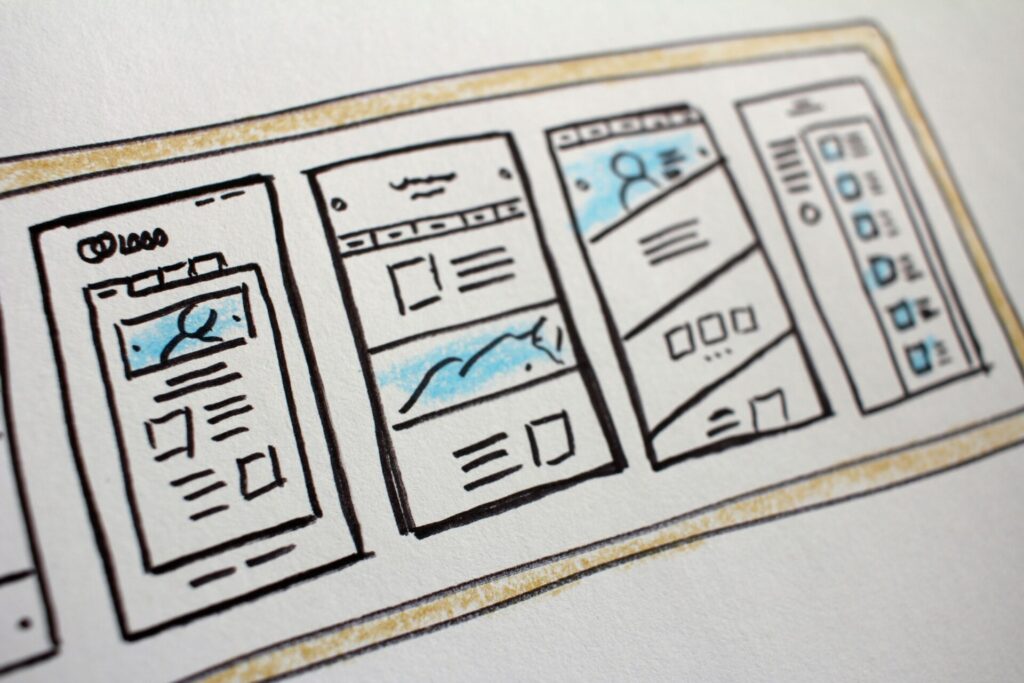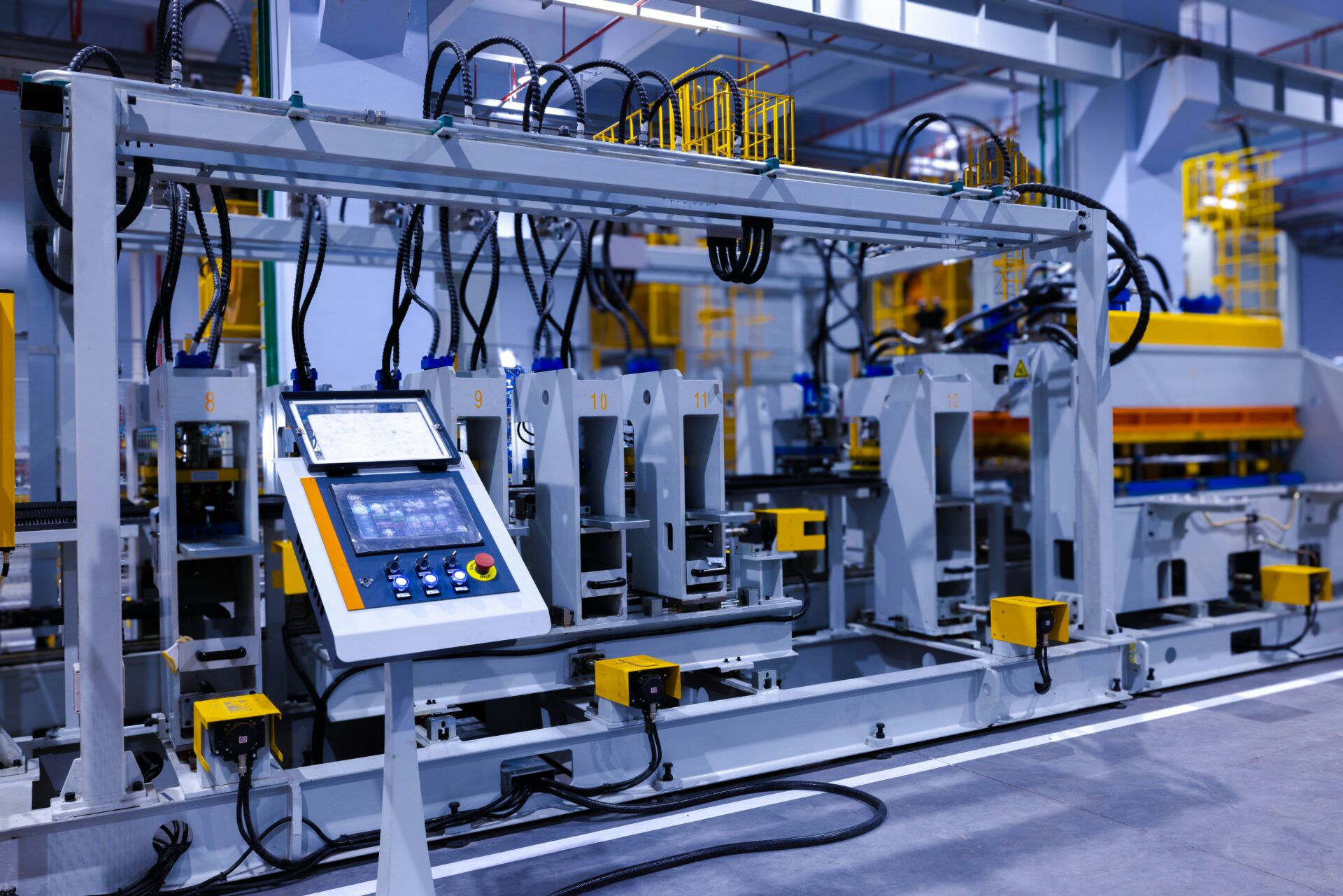
Achieving Website Redesign Goals for a Better User Experience
It’s vital for every business or group to have a website that makes visitors happy and comfortable. Often, a website is the first way a company meets its future customers. How it looks and works can really shape what they think about the brand. A website that’s easy to use and looks good can build trust, get more people involved, and even lead to more sales or actions.
Website redesign is the process of updating and improving an existing website to enhance its functionality, aesthetics, and overall user experience. It involves analyzing the current website, identifying areas for improvement, setting clear goals, choosing the right design and layout, adding new features, improving navigation and user flow, creating a responsive design, incorporating SEO best practices, integrating social media and other marketing channels, and measuring the success of the redesign project.
Key Takeaways
- A website redesign can greatly improve user experience.
- Key areas for improvement in your current website should be identified.
- Clear goals should be set for your website redesign project.
- Choosing the right design and layout is crucial for a successful website redesign.
- Enhancing website functionality and user engagement through new features is important.
Why a website redesign is necessary for better user experience
Outdated websites can have a negative impact on user experience. Slow load times, broken links, outdated content, and poor navigation can frustrate users and drive them away from your website. In today’s fast-paced world, users expect websites to load quickly and provide relevant and up-to-date information. A website redesign can address these issues and provide a better user experience.
A website redesign offers several benefits for both users and businesses. Improved functionality allows users to easily navigate through the website, find the information they need, and complete desired actions such as making a purchase or filling out a form. Aesthetically pleasing designs can create a positive first impression and make users more likely to stay on the website and explore further. Additionally, a website redesign can help businesses stay competitive in their industry by incorporating the latest design trends and technologies.
Identifying key areas for improvement in your current website
Before starting a website redesign project, it is important to analyze your current website to identify areas that need improvement. This can be done through user testing, analyzing website analytics, and gathering feedback from users. Common areas that may need improvement include navigation, load times, content organization, and mobile responsiveness.
Navigation is a critical aspect of a website’s user experience. Users should be able to easily find what they are looking for and navigate through the website without confusion. If your current website has a complex or cluttered navigation menu, it may be difficult for users to find the information they need. Simplifying the menu and adding clear labels can greatly improve the user experience.
Load times are another important factor in user experience. Slow load times can frustrate users and lead to high bounce rates. Optimizing images, minifying code, and using caching techniques can help improve load times and provide a better user experience.
Setting clear goals for your website redesign project
| Metrics | Description |
|---|---|
| Conversion rate | The percentage of website visitors who complete a desired action, such as making a purchase or filling out a form. |
| Bounce rate | The percentage of website visitors who leave the site after viewing only one page. |
| Average session duration | The average amount of time visitors spend on the website during a single session. |
| Page load time | The amount of time it takes for a web page to fully load in a browser. |
| Mobile responsiveness | The ability of a website to adapt to different screen sizes and devices, such as smartphones and tablets. |
| User engagement | The level of interaction and interest shown by website visitors, such as commenting on blog posts or sharing content on social media. |
Setting clear goals for your website redesign project is essential for its success. Without clear goals, it can be difficult to measure the effectiveness of the redesign and determine if it has achieved its intended purpose. Goals can vary depending on the nature of your business or organization, but some common examples include increasing website traffic, improving conversion rates, enhancing brand awareness, or providing a better user experience.
When setting goals, it is important to make them specific, measurable, achievable, relevant, and time-bound (SMART). For example, instead of setting a goal to increase website traffic, you could set a goal to increase organic search traffic by 20% within six months. This allows you to track progress and make adjustments as needed.
Choosing the right design and layout for your new website
Choosing the right design and layout for your new website is crucial for creating a positive user experience. The design should align with your brand identity and goals while also being visually appealing and user-friendly.
When choosing a design and layout, consider factors such as color scheme, typography, imagery, and overall aesthetics. The design should reflect your brand’s personality and values, and create a cohesive and memorable experience for users. It should also be visually appealing and engaging, with high-quality images and clear typography.
In terms of user-friendliness, the design should be intuitive and easy to navigate. Users should be able to find the information they need quickly and easily. Clear calls-to-action and well-organized content can help guide users through the website and encourage them to take desired actions.
Enhancing website functionality and user engagement through new features

Adding new features to your website can enhance its functionality and increase user engagement. Features such as chatbots, interactive elements, and personalized recommendations can provide a more interactive and personalized experience for users.
Chatbots are becoming increasingly popular as a way to provide instant customer support and answer frequently asked questions. They can help users find the information they need quickly and efficiently, improving the overall user experience.
Interactive elements such as quizzes, surveys, or calculators can engage users and encourage them to interact with your website. This can help increase time spent on the website and provide valuable insights about your audience.
Personalized recommendations based on user behavior or preferences can also enhance the user experience. By showing users relevant content or products based on their previous interactions, you can create a more personalized and tailored experience.
Improving website navigation and user flow for a seamless experience
Improving website navigation and user flow is essential for providing a seamless user experience. Users should be able to easily navigate through the website, find the information they need, and complete desired actions without confusion or frustration.
Simplifying menus and reducing the number of clicks required to reach important pages can greatly improve navigation. Users should be able to find what they are looking for within a few clicks. Clear labels, drop-down menus, and search functionality can also help users find information quickly.
User flow refers to the path that users take on your website from entry point to conversion. Analyzing user flow through website analytics can help identify areas where users are dropping off or getting stuck. By optimizing the user flow, you can guide users through the website and encourage them to take desired actions.
Creating a responsive design for optimal viewing on all devices
Creating a responsive design is crucial for providing an optimal viewing experience on all devices. With the increasing use of smartphones and tablets, it is important to ensure that your website looks and functions well on different screen sizes.
A responsive design automatically adjusts the layout and content of your website based on the screen size of the device being used. This ensures that users have a consistent and user-friendly experience regardless of the device they are using.
When creating a responsive design, it is important to prioritize mobile devices. This means designing for mobile first and then scaling up for larger screens. This approach ensures that your website is optimized for the majority of users who access it from mobile devices.
Incorporating SEO best practices for improved search engine visibility
Incorporating SEO (search engine optimization) best practices is essential for improving search engine visibility and driving organic traffic to your website. SEO involves optimizing your website’s content, structure, and technical aspects to make it more visible to search engines like Google.
Some SEO best practices include using relevant keywords in your content, optimizing meta tags and descriptions, creating high-quality and shareable content, improving website speed and performance, and building high-quality backlinks.
By incorporating these best practices into your website redesign project, you can improve your website’s visibility in search engine results pages (SERPs) and attract more organic traffic.
Integrating social media and other marketing channels for increased traffic
Integrating social media and other marketing channels into your website can help increase traffic and drive engagement. Social media platforms such as Facebook, Twitter, Instagram, and LinkedIn provide opportunities to reach a wider audience and promote your website.
Adding social media sharing buttons to your website allows users to easily share your content with their followers, increasing its reach and potential for engagement. You can also embed social media feeds or widgets on your website to showcase your social media presence and encourage users to follow or engage with you on those platforms.
In addition to social media, you can also integrate other marketing channels such as email marketing, content marketing, and paid advertising into your website. This can help drive traffic and conversions by reaching your target audience through different channels.
Measuring the success of your website redesign project through analytics and user feedback
Measuring the success of your website redesign project is crucial for evaluating its effectiveness and making improvements. Analytics and user feedback provide valuable insights into how users are interacting with your website and whether it is meeting their needs.
Website analytics tools such as Google Analytics can provide data on website traffic, user behavior, conversion rates, and more. By tracking key metrics such as bounce rate, time on page, and conversion rate, you can determine if the redesign has achieved its intended goals.
User feedback can be gathered through surveys, interviews, or user testing sessions. This feedback can provide valuable insights into how users perceive your website, what they like or dislike about it, and areas for improvement.
By regularly analyzing analytics data and gathering user feedback, you can make data-driven decisions to continuously improve your website’s user experience.
In conclusion, a website redesign is necessary for providing a positive user experience and achieving business goals. Outdated websites can negatively impact user experience and drive users away. A website redesign offers several benefits such as improved functionality, aesthetics, navigation, and user engagement.
When planning a website redesign project, it is important to analyze your current website, identify areas for improvement, set clear goals, choose the right design and layout, enhance functionality and user engagement through new features, improve navigation and user flow, create a responsive design, incorporate SEO best practices, integrate social media and other marketing channels, and measure the success of the project through analytics and user feedback.
By considering these factors and investing in a website redesign, you can provide a better user experience, increase engagement, and drive conversions for your business or organization.
If you’re looking to transform your brand through a website redesign, it’s crucial to understand the role of consistent messaging. In a recent article by Snowberry Media, they delve into the importance of maintaining a cohesive message across all platforms and touchpoints. This article provides valuable insights on how consistent messaging can help in transforming your brand and creating a seamless user experience. To learn more about this topic, check out the article here. Additionally, if you’re in the process of choosing a web design agency for your business, Snowberry Media has another informative resource that offers tips and guidance on making the right decision. You can find it here.
FAQs
Website redesign is the process of updating and improving the design, functionality, and content of a website to enhance its performance and user experience.
The goals of website redesign may vary depending on the specific needs of a business or organization. However, some common goals include improving website usability, enhancing user experience, increasing website traffic, boosting conversions, and aligning the website with the brand’s overall marketing strategy.
Website redesign is important because it helps businesses and organizations stay relevant and competitive in the digital marketplace. A well-designed and user-friendly website can attract and retain customers, increase brand awareness, and drive revenue growth.
The steps involved in website redesign may vary depending on the scope and complexity of the project. However, some common steps include conducting a website audit, defining goals and objectives, creating a design and content strategy, developing wireframes and prototypes, testing and refining the website, and launching the new site.
The timeline for website redesign may vary depending on the scope and complexity of the project. A simple redesign may take a few weeks, while a more complex redesign may take several months or even a year to complete.
The cost of website redesign may vary depending on the scope and complexity of the project, as well as the expertise and experience of the web design agency. A simple redesign may cost a few thousand dollars, while a more complex redesign may cost tens of thousands of dollars or more.



